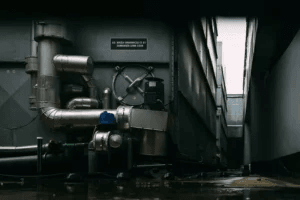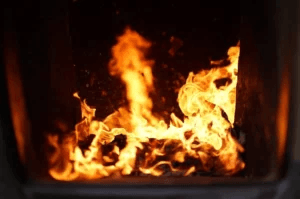As the winter months approach, the importance of a well-functioning furnace cannot be overstated. Ensuring your heating system is in top-notch condition is essential for a comfortable and warm home environment. However, even the best-maintained furnaces can run into issues. Whether you’re considering a new furnace installation Morgan Hill, CA, or simply looking to maintain your current system, understanding the common repair issues can save you time and money. This article will delve into the most frequent furnace problems and provide straightforward solutions to keep your home cozy throughout the chilly season.
Furnace repair Morgan Hill, CA, can range from simple fixes to more complex issues that require professional attention. No matter the severity, having the know-how to identify and address these problems can significantly enhance your furnace’s efficiency and longevity. In the following sections, we will explore diagnostic tips, preventive maintenance, and when to call in the experts for furnace repair. This comprehensive guide aims to equip you with the knowledge needed to tackle common furnace repair issues, ensuring your heating system runs smoothly. Stay with us as we guide you through the ins and outs of furnace upkeep and repair, providing valuable insights to ensure your home remains a warm sanctuary against the winter cold.
Diagnosing Furnace Malfunctions: A Step-by-Step Guide
Identifying the root cause of furnace malfunctions is the first step towards ensuring your heating system operates efficiently and reliably. Before you reach out for professional help or attempt any repairs, a systematic approach to diagnosing your furnace can save you both time and resources. Start by checking the most common issues such as the thermostat settings, power supply, and furnace filter condition. A thermostat not set to “heat” or a tripped circuit breaker can often be the culprit behind a furnace that won’t turn on. Additionally, a clogged filter restricts airflow, compromising the furnace’s efficiency and potentially leading to more serious problems.
Once you’ve assessed these initial factors, listen for unusual noises and observe the furnace’s flame color. Strange sounds like banging, whistling, or grinding can indicate mechanical issues, while a flame color other than blue may suggest incomplete combustion, a serious issue that requires immediate attention. Inspecting the furnace’s vents and exhaust flue for blockages is also crucial, as these can lead to dangerous carbon monoxide build-ups inside your home. If these basic checks don’t uncover the problem, or if you’re uncomfortable performing them, it’s time to consult with a professional. Remember, regular maintenance and early detection of issues are key to avoiding costly furnace repairs down the line.

Simple Fixes for Common Furnace Problems
Addressing common furnace problems doesn’t always require a call to a professional. Many issues can be solved with some basic troubleshooting and minor adjustments. For instance, if your furnace isn’t producing heat, start by ensuring that the thermostat is set correctly and that it’s operating properly. A quick battery change in a non-responsive thermostat can sometimes do the trick. Similarly, a furnace that frequently turns on and off, known as short cycling, might simply have a dirty air filter. Replacing or cleaning the air filter can improve airflow and efficiency, resolving the short cycling issue without the need for professional intervention.
Another simple yet often overlooked solution is checking the circuit breaker or fuse box to ensure the furnace’s power supply isn’t interrupted. If the furnace fan runs but there’s no heat, the issue might be with the pilot light or ignition system. For older furnaces, relighting the pilot light according to the manufacturer’s instructions can quickly fix the problem. In contrast, modern furnaces with electronic ignition systems may require resetting the system. It’s also beneficial to ensure all registers and vents are open and unobstructed, promoting proper air circulation throughout your home. While these fixes can resolve several common issues, if the problem persists or you’re unsure about performing any steps, seeking professional furnace repair is always the safest option.
When to Call a Professional: Navigating Complex Repairs
Navigating complex furnace repairs can be daunting for most homeowners. While a proactive approach to maintenance and minor troubleshooting can mitigate many common issues, there comes a point when professional intervention becomes necessary. Recognizing the signs that indicate the need for expert help is crucial. For example, if your furnace is making unusual noises, such as banging, squealing, or rattling, it could signify serious internal problems that require professional diagnosis and repair. Similarly, if you experience frequent cycling or your furnace fails to maintain a consistent temperature, these issues could indicate malfunctioning components, like the thermostat, blower motor, or heat exchanger, which are beyond the scope of typical DIY fixes.
Safety concerns are another major reason to call in professionals for furnace repairs. Issues like gas leaks, carbon monoxide production, or electrical hazards pose serious risks to your household’s safety and should never be handled without the proper training and equipment. Professionals have the expertise to safely diagnose and fix these issues, ensuring that your furnace operates safely and efficiently. Additionally, attempting to repair these complex issues yourself can void warranties, lead to more significant problems, or even result in legal liabilities. Therefore, it’s not only a matter of capability but also of ensuring the safety and legality of your repairs.
Finally, the longevity and efficiency of your furnace largely depend on the quality of the repairs and maintenance it receives. Professional technicians can offer a comprehensive assessment and perform repairs that not only fix the immediate problem but also address underlying issues that could lead to future breakdowns. Investing in professional furnace repair services ensures that your heating system operates at peak efficiency, saving you money on energy costs in the long run. Moreover, technicians can provide valuable advice on maintenance practices and when it might be more cost-effective to consider a replacement rather than continuing to repair an aging furnace. Recognizing when to call a professional is not just about solving immediate issues; it’s about making informed decisions for the long-term health and efficiency of your home’s heating system.

Understanding the ins and outs of common furnace repair issues not only empowers you to maintain your heating system efficiently but also ensures the comfort and safety of your home during the colder months. Whether you’re facing minor hiccups or considering a brand-new furnace installation Morgan Hill, CA, knowing when and how to address these issues can save you time, money, and ensure your home remains a warm haven. For those contemplating an upgrade or installation, remember that a properly installed furnace not only enhances your home’s warmth but also its energy efficiency, ultimately saving you money on heating costs. Pelle Heating & Air Conditioning stands ready to assist with top-notch advice and service, ensuring your furnace operates at peak efficiency.
When faced with furnace repair issues that are beyond simple DIY fixes, it’s crucial to call in the experts. Pelle Heating & Air Conditioning offers professional furnace repair Morgan Hill, CA, backed by years of experience and a commitment to customer satisfaction. Whether it’s routine maintenance, emergency repairs, or comprehensive system overhauls, our team is equipped to handle your needs with the utmost professionalism and efficiency. Don’t let furnace problems leave you in the cold; reach out to Pelle Heating & Air Conditioning today for reliable service and peace of mind. Let us help you maintain a comfortable, warm, and safe environment in your home throughout the winter season and beyond.
The post Common Furnace Repair Issues and How to Fix Them appeared first on Pelle Heating & Air Conditioning.

